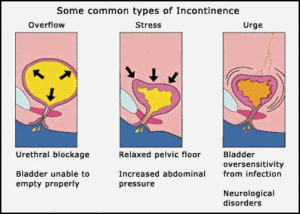

Repeat this sequence for as many repetitions as you can, three or more times per day. Simply concentrating on your pelvic floor region and contracting will activate the correct muscles. Doing a Kegel exercise should replicate that sensation of stopping your urine. If you’re unsure if you’re doing it correctly, try stopping your urine midstream. Contracting the pelvic floor is the same mechanism used when you voluntarily stop the flow of urine midstream. Try contracting the pelvic floor for 5 to 10 seconds, and then rest for the same amount of time. The process strengthens the muscles involved in holding urine, specifically the pelvic floor muscles. Kegel exercises are usually the first treatment option for urinary incontinence. You may want to wear an absorbent pad while you do activities that increase your risk of leakage.Īdjust your lifestyle habits to be healthier overall. The coughing that can result may lead to stress incontinence on top of urge incontinence. If you have diabetes mellitus, you will want to try to maintain a stable and acceptable blood glucose level.

In addition, try to lose weight if you have overweight. Try to eat more fiber to prevent constipation, which can put pressure on the bladder or make you have the urge to empty your bladder. You should limit your intake of alcohol, caffeine, and foods that are spicy, acidic, or contain artificial sweeteners. Lifestyle changesĬhanging the foods you eat can reduce bladder irritation. Talk to your doctor if your symptoms worsen or don’t improve. Some treatments can be self-administered at home. You may want to consider trying some of the many treatment options available for urge incontinence. However, the condition could be very uncomfortable and adversely affect your daily life. Most people with urge incontinence can live without treatment. Your doctor may also recommended doing Kegel exercises.Īre there home remedies for urge incontinence? Your doctor will likely recommend that you try behavioral treatments, such as bladder retraining and bladder relaxation exercises, before suggesting more invasive treatments. Each person will have a slightly different treatment plan. Treatments are varied and depend on your unique symptoms and condition. This information can help reveal activity patterns that could influence your treatment plan. Your healthcare provider may also ask you to keep a bladder diary to track your fluid intake and urine output. Your healthcare provider will ask you to perform activities that cause your incontinence symptoms. This test determines how much urine you release and how quickly it’s released. This test establishes your bladder size and whether your bladder is functioning properly. These studies are used to evaluate how your bladder and urethra are functioning. Computers and rotating X-ray machines are used to take detailed pictures of your organs. This plain film X-ray study can be used to diagnose conditions affecting the urinary and gastrointestinal systems. Kidney, ureter, and bladder (KUB) study.Dye is injected into your bloodstream, and fluoroscopic X-rays are taken of your urinary tract to follow the dye as it moves over to and through your urinary system. Various X-ray studies allow your doctor to diagnose incontinence: A tiny camera on a fiberoptic scope is inserted into your urethra and used to examine your urethra and bladder. This allows your doctor to view the anatomy of the bladder and see how much urine is left in the bladder after urinating. If a urinary tract infection is suspected, this test can determine the strain of bacterium present. This test checks for signs of infection or other problems This tests the strength of your pelvic floor muscles.

Your healthcare provider may also perform additional tests if necessary, including: They will likely perform a physical exam, including a pelvic exam, and take a urine sample. To diagnose incontinence and develop a treatment plan, your healthcare provider will ask you about your medical history and history of incontinence.


 0 kommentar(er)
0 kommentar(er)
